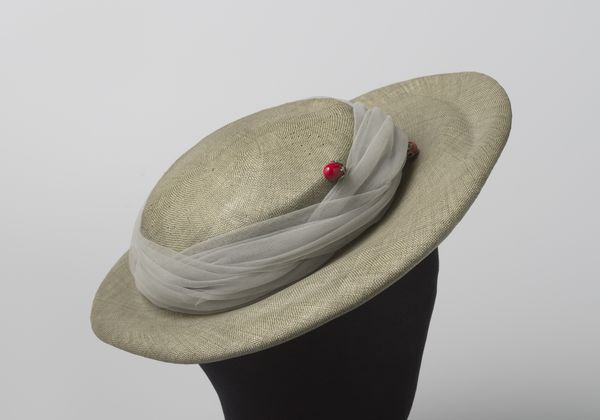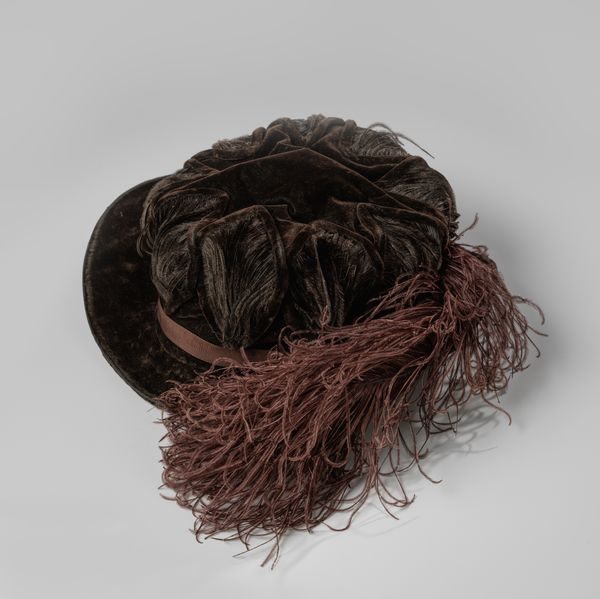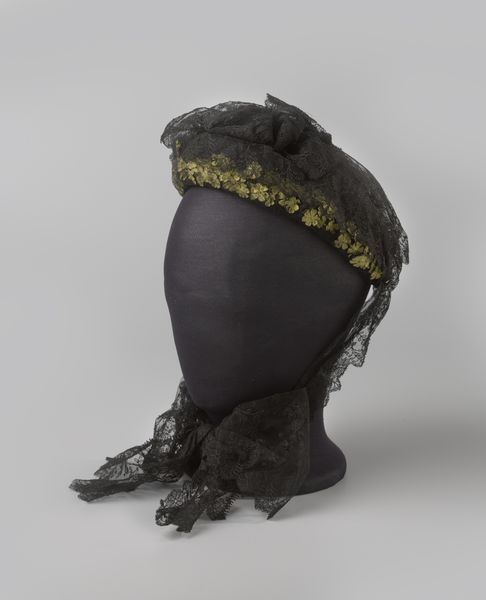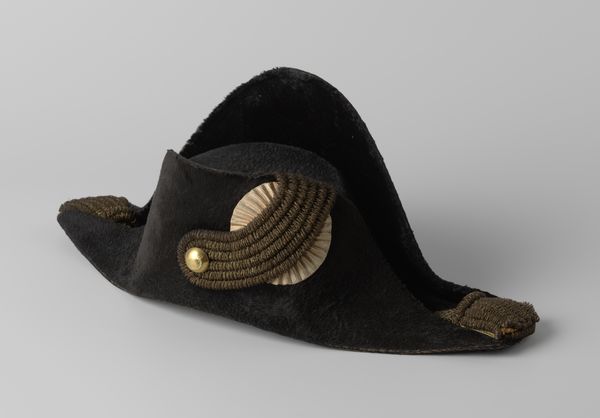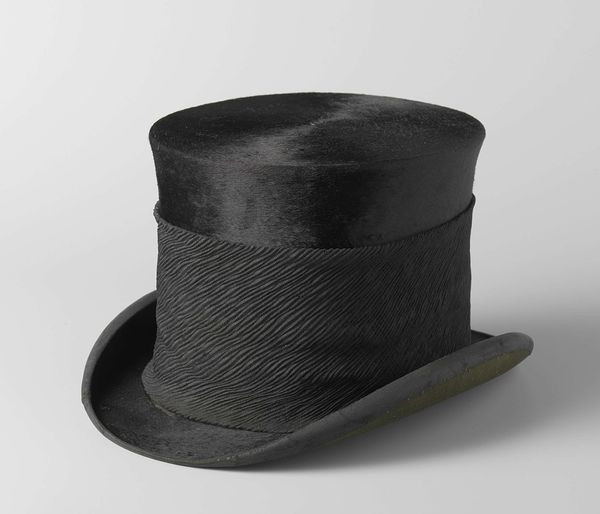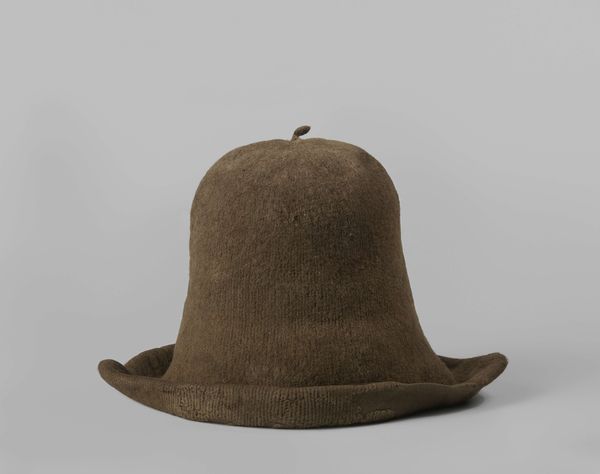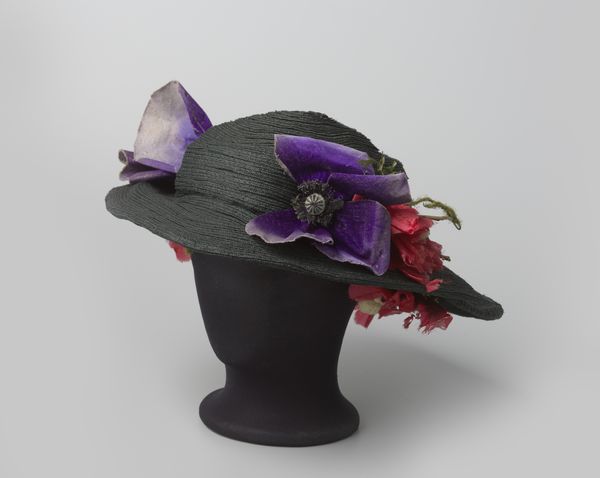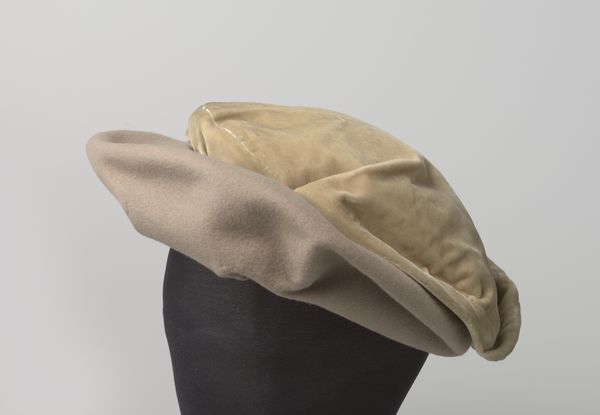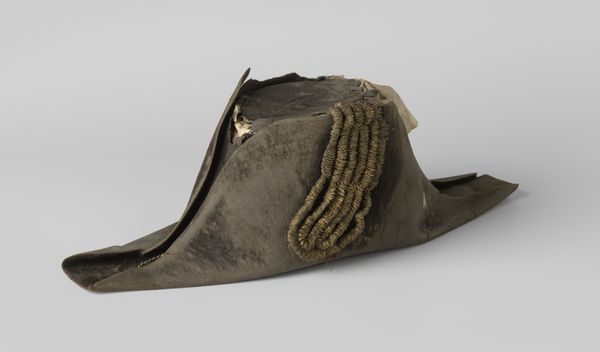
Copyright: Rijks Museum: Open Domain
Curator: What an elegant, if somewhat mournful, silhouette. Is that what hats feel like, a miniature dark cloud hanging over the head? Editor: This image presents a black velvet hat with ostrich feather trim, dating from around 1912, belonging to a profile named Madame Haggelin Hilletard. It's photography but the subject matter, especially rendered in those heavy materials, definitely speaks to impressionism. Curator: Impressionism, certainly, in the way it catches light—or rather, swallows it whole. That velvet seems to absorb everything, leaving just a hint of sheen in the feathers. The shape is almost brutally simple, softened only by those long, swaying plumes. Editor: Exactly! It's a potent symbol of early 20th-century bourgeois style—an aspirational fashion item meant to signal wealth, taste, and social status. Think of it as wearable social capital. But also the cost! Feathers, of course, acquired through colonial exploitation. Curator: It’s easy to get lost in the shadows of it all. And the implications too. But I'm pulled in, in part, by the materiality of it all—imagine feeling the textures: that smooth, deep velvet, against the tickle of the ostrich plumes… does that not tickle you into the time as well? I bet Madame Haggelin Hilletard's entrance to any space was preceded by the rustling of those feathers, weren't there unspoken statements implied when a figure floated into any social space in this finery? Editor: Indeed. Hats were crucial for projecting power and control in public. By the turn of the century, however, fashion began to respond to calls for reform—both from within and outside of the upper classes. Still, one sees lingering traces here of older hierarchical display mechanisms. Curator: Right, but there is a melancholy about the overall form, this isn’t necessarily celebration, is it? Perhaps she was at a funerary. Though no doubt looking impossibly chic nonetheless. Editor: Well, these photographic documents were equally crucial to solidifying cultural power dynamics—offering the bourgeois subject visibility and validation in a new industrial era of reproduction. This hat served in both roles simultaneously. Curator: You know, seeing it, feeling it—it tells such a subtle story about wealth, about power, and yes, about the sometimes crushing weight of appearance, it would seem, it tells quite the story about modern times, in and of itself. Editor: And seeing it in a collection now, decades later, adds still more layers to the narrative—from an individual's sartorial choice, the conversation broadens towards industrial economies, fashion trends, and photography as social inscription!
Comments
No comments
Be the first to comment and join the conversation on the ultimate creative platform.
